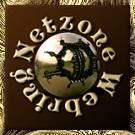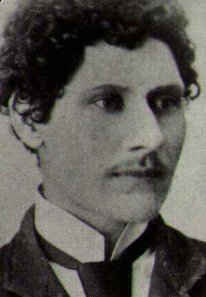![]()
Coasts
Rivers/Lakes
Lowlands/Plains
Geysers/Mud
Glaciers
Mt. Ruapehu
Mt. Cook
White Island
A Maori Legend
![]()
Abbotsford
Aramoana
Ballantynes
Brynderwyns
Cave Creek
Hawkes Bay
H.M.S. Orpheus
Influenza
Mt. Erebus
Mt. Tarawera
Rainbow Warrior
Seacliff Hospital
Tangiwai
Wahine
![]()
Annie Aves
Ata-hoe
Daisy Basham
Jean Batten
Minnie Dean
Mabel Howard
Margaret Mahy
Kath Mansfield
Kate Sheppard
Kiri Te Kanawa
Catherine Tizard
Murray Ball
Charles Goldie
Edmund Hillary
Richard Pearse
Lord Rutherford
Charles Upham
![]()
NZ FAQ--Funny
NZ Links
Credits
"I had successful aerial navigation within my grasp, if I had the patience to design a small craft that would be manageable. But I decided to give up the struggle as it was useless to try to compete with men who had factories at their backs." --Richard Pearse, 1928. Canterbury farmer Richard Pearse is the source of much debate over whether he successfully flew before the Wright Brothers. This issue may never be resolved, but without a doubt Pearse did experience powered flight at a time when few other people were even thinking of it being possible. Born in 1877 Pearse demonstrated an early interest in things that flew, be it toys or birds, right from a young age. He also took a great interest in things mechanical studying them to see how they worked. Yet, at the time, there was little around to study. No one Richard in New Zealand owned a 'horseless carriage' with people still replying on the horse. A few people owned Penny Farthing bicycles and there were one or two safety bicycles, but walking was the favoured mode of transport. A neighbour did have the only oil engine in the locality. By the time Pearse left school he had already produced several inventions. Among these was a bicycle that could pump up a tyre while it was being ridden. Then he made an early gramophone which both recorded and played sound through a small horn. There were several other inventions including very simple flying model aeroplanes, a motorcycle, and a machine for producing movie-like movement by flipping a series of still pictures. Next was a small steam engine made from a golden syrup tin filled with water. It was heated with a methylated spirits burner and, once the water boiled, the steam pushed a piston causing a flywheel to rotate. It's interesting to note he had to build all his own tools and had no technical training of any sort. Now the building of an aeroplane was occupying many of Richard Pearse's thoughts. This was not something he talked about as flying was viewed as an impossibility by most people. Worldwide some were trying it using frames covered in cloth and, in some cases, the technique of flapping their arms to imitate birds. These first flyers usually ended up on the ground with broken bones, or worse having not survived the fall. The first problem was creating a suitable internal combustion engine, this was to take many years. When, one very late night, it finally came to life the noise could be heard across many miles of the flat land around his property. The next day was to bring serious repercussions as Pearse discovered the racket had caused cattle to stampede, people had been woken up for miles, and even the local clergy requested to talk to this lunatic and attempt to bring his experiments to a halt. Opinion was that if God had meant man to fly he would have given them wings. Pearse quietly went back to designing his aeroplane, this he did in great secrecy with his workshop hidden behind a high gorse hedge that surrounded his land. Pearse used a friend's paddock to test his first plane with the intention being to make a relatively straight flight and then land. Due to lack of control the rather wobbly craft turned left, then continued for approximately half a mile, before the engine stopped and the plane 'landed' in some gorse bushes. This left its pilot with a slightly injured shoulder after he fell several metres. His craft, though it never achieved controlled flight, was many years ahead of its time design-wise. Made with a bamboo and aluminium frame it was braced with wire and had a steerable tricycle undercarriage, adjustable-pitch metal propeller and ailerons.
Though Pearse left no written record of his first flights there are eye witness reports and a possible date for this flight of 31st March 1902. One neighbour is reported as saying, "Had Dick Pearse waited another day he would have been a proper fool instead of just a bloody fool", the next day being April Fool's Day. Some people put the year at 1903 and Pearse confused the issue further by stating it was 1904 in a letter to a local newspaper. For the record, Jane's All The World's Aircraft, considered the world's foremost authority on the aviation industry, have accepted 1903 as the correct date, whilst supporters claim he preceded Orville Wright's better-known flight by nine months. What is known is that between the first attempt and July the next year Pearse made four more flights, getting to know the prickly gorse intimately in the process. In fact, it is accepted that every single one of Pearce's flights landed in gorse bushes, with the exception of one which ended in a riverbed. For all his takeoffs no evidence can be found that Pearse ever made a proper landing. Then came the news of the flights at Kitty Hawk. Unlike Richard Pearse's flights these were well documented and occurred on the 17th December, 1903. Mad Pearse, as he was known, now took a break from inventing, being severely disillusioned with his lack of recognition; it wasn't until 1909 that more is heard from him. A reporter sighted an aircraft on his property which was very large, it was thought extremely unlikely it could taxi successfully on the rough ground of the paddocks. Most certainly it couldn't be manouvered through farm gates and onto the road. Speculation exists that Pearse may have been experimenting with a machine similar to those being built overseas at the stage. Pearse can fairly claim to have given the world ailerons which he invented in 1904 and patented on June 19, 1906. He let the patent lapse in 1910 later explaining that he, "did not see much prospect for selling aeroplanes in New Zealand." Pearse was wrong as war was just around the corner. In 1911 he moved to Milton and a very secluded area. No houses overlooked his property and the only reported incidents were that of a local farmer who, upon hearing a strange noise, went to look and saw Pearse testing an unusual machine; he didn't stay around to watch. Three people also claim to have seen his aeroplane hanging over yet another gorse hedge. While living here Pearse built a number of farm implements including a topdresser, a potato planter and a plough. Some were successful, others failed very quickly and were abandoned. As with his previous acreage, Pearse was meant to be farming for a living, however what crops there were his neighbours tended and the 300 sheep he owned all but starved to death through lack of food. 1917 came and he was called up to join the army. Pearse spent a year overseas, however was discharged due to illness. Upon his return in 1921 he moved to Christchurch avoiding taking on the hated job of farming by busying himself building three houses. He did all the work himself, including plumbing and wiring. While living in the third house he attempted to design a vertical takeoff plane and patented certain systems. Pearse envisaged this plane as suitable for military use especially in attacking submarines. The design incorporated many good features, though some conflicted with others, and certain features have now been shown to be impractical. One of these is the propeller which was a similar design to a windmill and had variable pitch blades. It was also designed to rotate from vertical to almost horizontal position. For compactness the wings and tail folded up. Unlike his first flying machine this second 'Utility' aircraft never flew and had Pearse attempted to fly it he may well have gone down in history as New Zealand's first death in a heavier-than-air aircraft. Pearse worked on his 'Utility' plane for sixteen years and it was not completed until 1945; this being after the successful testing of the Sikorsky helicopter. By this stage any original ideas Pearse had planned to implement at the start of the project had been superseded by other inventors. Richard Pearse spent the final two years of his life under care at Sunnyside Psychiatric Hospital where he quietly made baskets and ate when told; he died in 1953. Records show he was reasonably mentally stable, but simply unable to look after himself. During his life he was a failure at gaining an income from farming and a recluse for many years. When he died no one claimed his possessions and many of his papers were simply dumped and blew away. Fortunately someone purchased the prototype aeroplane, gathered what papers they could locate, (including a patent description), and put it all into storage where it lay forgotten for forty years. Today the prototype 'Utility Plane' can be seen at the Museum of Transport and Technology, Western Springs, Auckland. The debate about whether or not Richard Pearse beat the Wright Brothers will never be resolved but as he himself said, "It is impossible to assign any invention to one man, as all inventions are the product of many minds." Pearse did not claim to have flown as he thought of flying as a sustained and controlled flight, something he never achieved. It's daunting to even consider what this man would have achieved given the opportunities of similar inventors in other parts of the world.
|


